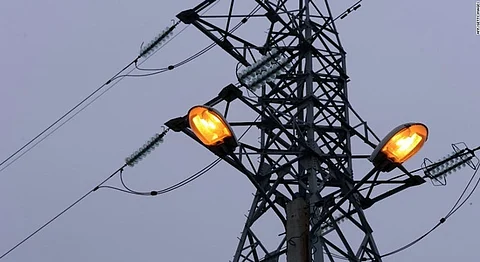
- #HGCREATORS
- #HGEXPLORE
- #HGVOICES
- #HGSHOP
- CAREERS
- ABOUT US
- CONTACT US

In a population of 1.25 billion, 300 million people in India continue to live without electricity. Typically, to generate electricity in a country like India where the demand is ever increasing but means of production scarce, the production of power comes at an exorbitant price. It often means increased taxes for citizens with already distressed wallets, however, the hue and cry over electricity will possibly come to an end with a major breakthrough by scientists at Delhi’s National Physical Laboratory (NPL), where they have devised a procedure to generate electricity from water at room temperature without using any external energy force.
Conventionally, commodities such as coal, diesel oil, naphtha, bunker fuel and liquefied natural gas (LNG) are used for the generation of electricity in the country. There has been an ongoing struggle to increase the reachability of a power supply, however, this find emerges as a game-changer possibly solving the power crisis in rural areas that suffer from an abysmally limited supply of electricity or are perhaps simply left out in the dark.
Scientists have used materials like nanoporous magnesium ferrite to split water into Hydronium (H3O) and Hydroxide (OH) ions, used silver and zinc as electrodes to make a cell that produces electricity.

“When we connect four cells [of 2-inch diameter] in a series the voltage increases to 3.70 volts and we can operate a small, plastic fan or an LED light of 1 watt, at a stretch, we can operate the LED for one week as zinc hydroxide, which forms at the anode, gets into the nanopores of magnesium ferrite and reduces its activity,” stated Dr. RK Kotnala, who led the research team, to The Hindu.
The Hindu explains the science behind the breakthrough, stating, “Since magnesium has high affinity for hydroxide, it spontaneously splits or dissociates water into hydronium and hydroxide ions. The hydronium ions get trapped inside the nanopores of magnesium ferrite and generate an electric field. The electric field helps in further dissociation of water.” Dr Kotnala added, “Because electrons are trapped in the oxygen vacancies they attract water molecules towards the surface of magnesium ferrite. Only when water molecule is brought very close to the magnesium atom can magnesium have any affinity with hydroxide and start the dissociation process.”
This is a proud moment for all Indians, as this brilliant innovation is not only cost effective but will also reduce the pressure on non-replenishable resources and serve to be a sustainable model in the long haul for our planet. This incredible find can illuminate the lives of countless people living frugally in remote areas and give them abundant opportunities to connect with the world and evolve rapidly. It also opens up exciting avenues of innovation and development, with an unlimited and affordable power supply.
Click here to read the complete report by The Hindu
Representational feature image via CNN
